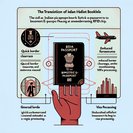
Dubai-based Emirates unveiled a suite of data-driven initiatives on 29 October aimed at predicting and avoiding severe turbulence across its global network. Building on partnerships with IATA’s Turbulence Aware platform, Lufthansa Systems’ Lido mPilot and Israeli start-up SkyPath, the carrier is now fusing crowdsourced EDR data, ADS-B feeds and AI-enhanced weather models directly into pilots’ electronic flight bags.
Captain Hassan Al-Hammadi, Divisional Senior VP Flight Operations, said the system has already reduced unexpected turbulence events “significantly” during a 12-month trial. For passengers, that translates into fewer seat-belt alerts, lower injury risk and more on-time arrivals; for corporates, it means smoother journeys for time-pressed executives and a measurable cut in aircraft maintenance costs.
The announcement matters beyond Emirates. Regulators increasingly view real-time turbulence data-sharing as a safety imperative, and the airline’s contribution will enlarge the global dataset. Airlines that interline with Emirates—or whose crews fly Emirates-managed wet-leases—stand to benefit indirectly.
From a sustainability angle, better route-optimisation also shaves fuel burn, supporting both Emirates’ net-zero roadmap and CORSIA compliance commitments. Travel buyers tracking scope-3 emissions should take note.
The product will be rolled out across Emirates’ 260-strong fleet by year-end, with training modules already in progress for pilots and dispatchers. Passengers will notice the change mainly through a steadier ride—but for mobility planners, the bigger win is enhanced predictability on critical long-haul sectors.
Captain Hassan Al-Hammadi, Divisional Senior VP Flight Operations, said the system has already reduced unexpected turbulence events “significantly” during a 12-month trial. For passengers, that translates into fewer seat-belt alerts, lower injury risk and more on-time arrivals; for corporates, it means smoother journeys for time-pressed executives and a measurable cut in aircraft maintenance costs.
The announcement matters beyond Emirates. Regulators increasingly view real-time turbulence data-sharing as a safety imperative, and the airline’s contribution will enlarge the global dataset. Airlines that interline with Emirates—or whose crews fly Emirates-managed wet-leases—stand to benefit indirectly.
From a sustainability angle, better route-optimisation also shaves fuel burn, supporting both Emirates’ net-zero roadmap and CORSIA compliance commitments. Travel buyers tracking scope-3 emissions should take note.
The product will be rolled out across Emirates’ 260-strong fleet by year-end, with training modules already in progress for pilots and dispatchers. Passengers will notice the change mainly through a steadier ride—but for mobility planners, the bigger win is enhanced predictability on critical long-haul sectors.





